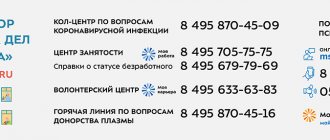Speech development with a neuropsychologist is a common occurrence today, since this mechanism is associated with certain changes in brain development. Learning disabilities in childhood are often caused by delays in the development of communication and higher mental functions. Therefore, complex studies of the development of children's speech and its neuropsychological basis are currently in great demand. Complex speech disorders in children require a neuropsychological approach to studying the problem in order to understand the mechanisms and manifestations of speech disorders, as well as to develop methods for their correction.
Developing speech with a neuropsychologist
Neuropsychology studies the consequences of injuries and damage to the central nervous system that affect the development of the human psyche. Speech and thinking disorders are caused by head trauma, cerebrovascular accident, brain tumors, neurodegenerative pathologies, epilepsy, cerebral palsy, attention deficit disorder or hyperactivity disorder in children and adolescents.
Individualized therapies are planned for people who require both neuropsychology and speech therapy. Neuropsychological intervention is necessary for a person who has suffered a brain injury, as a result of which attention, memory, speech, emotions, and behavior are impaired.
Neuropsychological mechanisms of speech development:
- Central speech motor mechanisms that control the functioning of the organs that form speech.
- Mechanisms for creating and reproducing sound forms.
All these mechanisms are interconnected and represent aspects of the psyche.
The development of communication is associated with the development of the brain. It is based on the coordinated work of many areas of the cerebral cortex, analyzer systems, and nerve fibers.
Speech therapy massage according to Prikhodko
Speech therapy massage is an active method of mechanical influence for dysarthria. It is used in cases where there is a violation of the tone of the articulatory muscles, changing the condition of the muscles of the peripheral speech apparatus. It indirectly helps improve the pronunciation side of speech.
Speech therapy massage according to Prikhodko is carried out at all stages of corrective action. It is used in the initial stages of rehabilitation, when the patient still does not have the fundamental ability to perform certain articulatory movements. Differentiated speech therapy massage at the Yusupov Hospital is carried out by a senior exercise therapy instructor who has knowledge of the anatomy and physiology of muscles and the speech apparatus, has undergone special training, and is fluent in massage techniques.
Rehabilitation specialists teach those caring for a patient with dysarthria basic massage techniques and passive articulatory gymnastics. Differentiated speech therapy massage is necessary to normalize the muscle tone of the articulatory apparatus, and in more severe cases, to reduce the degree of manifestation of motor defects of the articulatory muscles:
- Hyperkinesis (excessive violent motor acts that occur against the will of the patient);
- Spastic paresis,
- Ataxia (impaired coordination of movements not associated with muscle weakness);
- Synkinesia (additional movements that occur involuntarily during basic functional movements).
With its help, they activate those muscle groups of the peripheral speech apparatus that cannot fully contract, or activate new muscle groups that were previously inactive, stimulate proprioceptive sensations, and reduce the secretion of saliva. Speech therapy massage strengthens the pharyngeal reflex, prepares conditions for the formation of voluntary, coordinated movements of the articulation organs.
The essence of speech therapy massage is the application of mechanical irritations:
- Stroking;
- Tingling;
- Kneading;
- Rubbing;
- Vibrations;
- Effleurage.
The differentiated use of various massage techniques allows rehabilitation specialists at the Yusupov Hospital to reduce muscle tone in case of muscle spasticity or increase it in case of hypotonia of the articulatory muscles. Subsequently, the patient develops and carries out voluntary (active), coordinated movements of the articulation organs. Speech therapy massage is performed in the area of the muscles of the head, neck, and upper shoulder girdle. Particular attention is paid to the muscles of the peripheral speech apparatus (tongue, lips, soft palate and cheeks), as they ensure the production of speech.
Neuropsychological intervention process
Development of therapy methods:
- Assessment and diagnosis of a person’s neuropsychological status, as well as identifying the causes of speech disorder.
- Development of individual therapy programs.
- Conducting a check on the achievement of goals.
To assess and identify the problem, doctors use different methods:
- interviews with the person and his family members;
- study of medical records;
- observation;
- use of special tests.
Individualized treatment methods are then developed.
Correction of sound pronunciation
The peculiarity of voice correction for dysarthria is that it is a complex and lengthy process. From a physiological point of view, teaching a person to pronounce sounds is tantamount to creating a new conditioned reflex. If for dyslalia the method of staging by imitation is very effective, then for dysarthria speech therapists more often use a mixed method using mechanical assistance, speech therapy probes and the method of passive formation of articulatory structure, when the speech therapist, with the help of hands, special devices and probes, gives the patient’s tongue and lips the desired position . You can use auxiliary objects: a teaspoon, tubes, sticks of various diameters.
Voice correction technology for dysarthria is a long-term, painstaking and systematic work on the development of articulatory motor skills and automation of delivered sounds. Articulatory gymnastics and speech therapy massage do not stop at the stage of voice development, but are continued and combined. Speech therapists use individual techniques for producing sounds, analyzing the causes and nature of disorders.
Neuropsychological correction of speech disorders in children
There are certain methods and procedures aimed at correcting speech, as well as reducing the negative impact of pathology on a person’s life that arose as a result of brain damage.
The doctor uses the following neuropsychological techniques:
- Discursive method.
- Pencil and paper assignments.
- Computer programs.
Neuropsychological treatment aims to help children, adolescents and adults with a variety of neurological, medical and psychological conditions improve their daily functioning.
The treatment provided must take into account both the patient's reasons for seeking neuropsychological services and the secondary problems that have arisen. For children, treatment requires working with the child to learn to cope with emotions, control behavior, and cope with stress. However, much emphasis is placed on helping parents better guide their children by enabling them to change ineffective behavior patterns and interactions. Social skills training is an important component for children and adults, as this intervention will help make the child more effective in relationships with people and authority figures (such as parents and teachers).
Work on the correction and development of speech in children with general speech impairment (GSD) is labor-intensive and painstaking work, designed to last more than one year and affecting all aspects of speech. To achieve the best results, it is necessary that all participants in this fascinating process: a speech therapist, a neuropsychologist, a child and his parents form a strong union of like-minded people, the main task of which is the formation of speech-thinking activity, competent speech of a beloved child, as a ticket to life in the big world of adults.
Like any process, speech formation occurs gradually, step by step, from simple to complex. In parallel, working on the formation of all language levels: sound, verbal and word-formation, grammatical and syntactic.
In order to express his thoughts most correctly, completely and accurately, a child must have a sufficient vocabulary. Therefore, work on the correction and development of oral speech begins with expanding and improving the vocabulary. In this case, the word is considered as a lexical unit of the language and as a grammatical and syntactic unit of a sentence. By introducing children to the concepts of “a word denoting an object” and “a word denoting an action of an object,” they thereby prepare a platform for working on a sentence. By giving the concept of “a word denoting a characteristic of an object,” material is accumulated for spreading the sentence by definition.
After children have formed an idea of the words denoting an object and the action of an object, children are brought to the concept of a sentence and begin to work on the structure and grammatical design of the sentence.
After children learn to compose a common sentence and form it grammatically correctly, they move on to working on coherent speech.
First, we teach children to retell short stories based on the sequence of actions occurring in the story. then move on to descriptive stories. After which they move on to teaching children short, selective and creative retelling.
Having taught children retelling, they move on to developing in children the skill of composing short stories based on a series of pictures, a plot picture and a series of subject pictures.
Work on the syllabic composition of a word precedes work on the sound-letter composition of the word. By dividing words into syllables, children learn to recognize and isolate vowel sounds, which are the sound basis of a word. This is important considering that omitting vowels in words is one of the most common mistakes children make when writing.
After children learn to isolate vowel sounds from a word, they move on to work on isolating consonant sounds. First, children are taught to hear and distinguish between hard and soft consonants.
Work on the sound-letter composition of the word has actually already begun in the early stages. By this time, children already have an idea that words consist of sounds (letters); they are able to isolate vowel sounds from words, hear the presence of hard and soft consonant sounds in words, and identify the letters that indicate these sounds in a word. By completing tasks, children learn to listen and read words, to feel each subsequent sound in a word. Work on children’s assimilation of the sound-letter composition of words is carried out using the material of monosyllabic words. As practice shows, if a child learns to correctly perform sound-letter analysis of a monosyllabic word, then he can easily analyze and correctly write words of any syllabic structure, even the most complex.
At the same time, from the very first stage to the last, work is underway on sound production, automation of practiced sounds and their introduction into spontaneous speech.
Article by children's speech therapist Natalia Tsvetkova.
Causes of speech delay
Speech problems in children are not an independent diagnosis. This condition is often a consequence of the child’s developmental characteristics, as well as a side effect of existing diseases.
Intrauterine development
Intrauterine processes and the course of childbirth contribute to a greater extent to the delay in speech development. Neuroinfections of the mother during pregnancy (herpes, CMV, toxoplasmosis, rubella, etc.), tonsillitis, influenza, childbirth with any kind of complications (urgent or protracted labor) often cause developmental disorders in children.
Toxicoses in the first half of pregnancy, which affect the subcortical activity of the developing baby, also have a negative impact. A large percentage of children with subsequent communication difficulties are observed among premature infants.
Infant diseases
In addition to these reasons, the future characteristics of the child’s body can be affected by diseases and injuries experienced in infancy. This is especially true for complex infections, traumatic and infectious brain injuries.
Heredity
There is also a hereditary factor (neurological and speech problems in parents), which can result in alalia in the child. Experts note that, as a rule, boys are more susceptible to alalia than girls. Children who are lagging behind in motor development are also lagging behind in speech.
It is important to understand that speech development disorders are usually accompanied or become both consequences and causes of mental retardation. These two functions are closely related, and delay is highly undesirable.
It is advisable to seek treatment from a specialist at the first symptoms of alalia, because if you do not start speech promptly, you can worsen the development of the child’s mental abilities.
Help for non-speaking children is provided by speech therapists, whose task is to establish the exact cause of the developmental delay in a particular child. Next, an individual development program is developed with the goal of developing normal speech processes.





